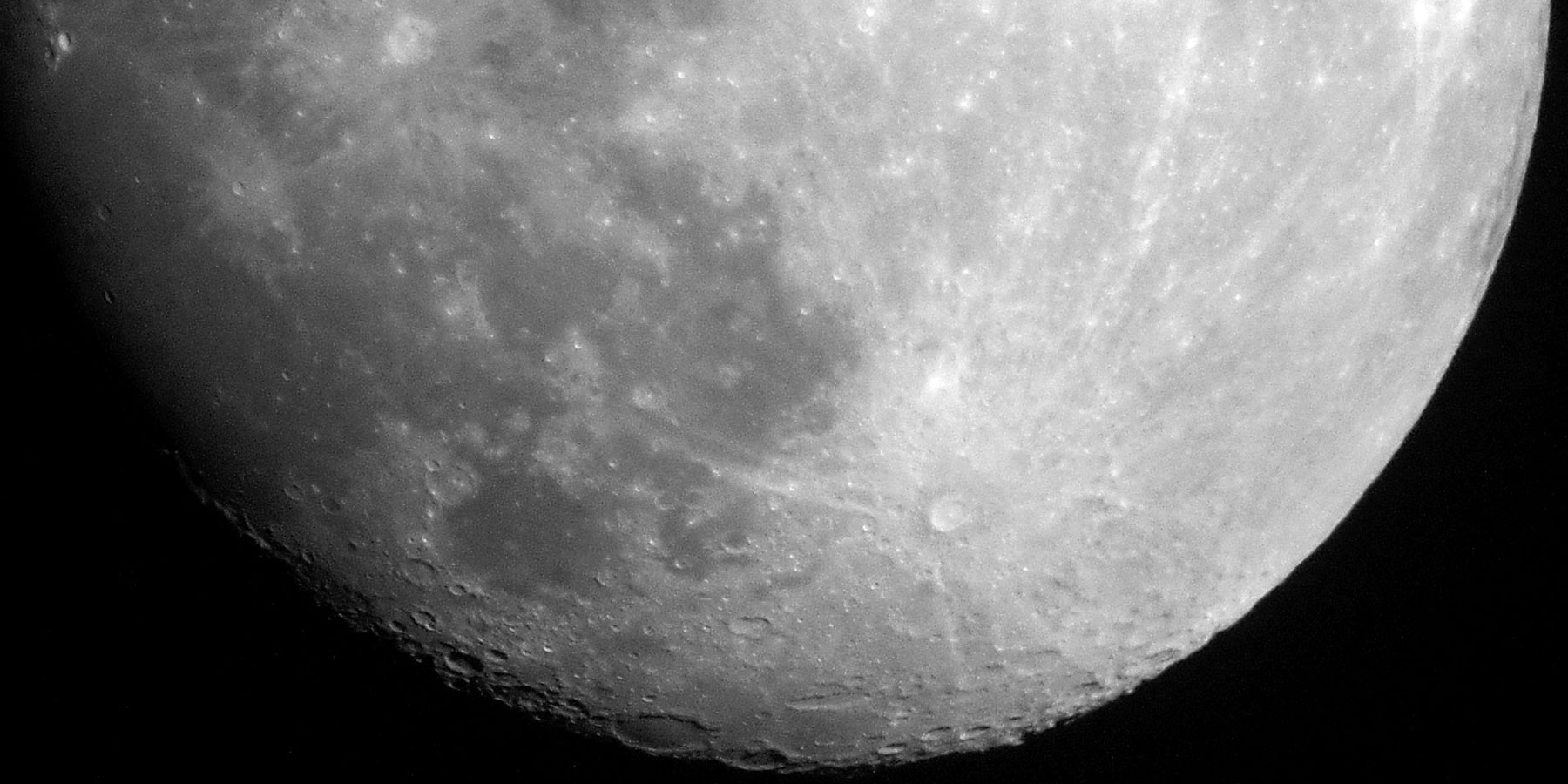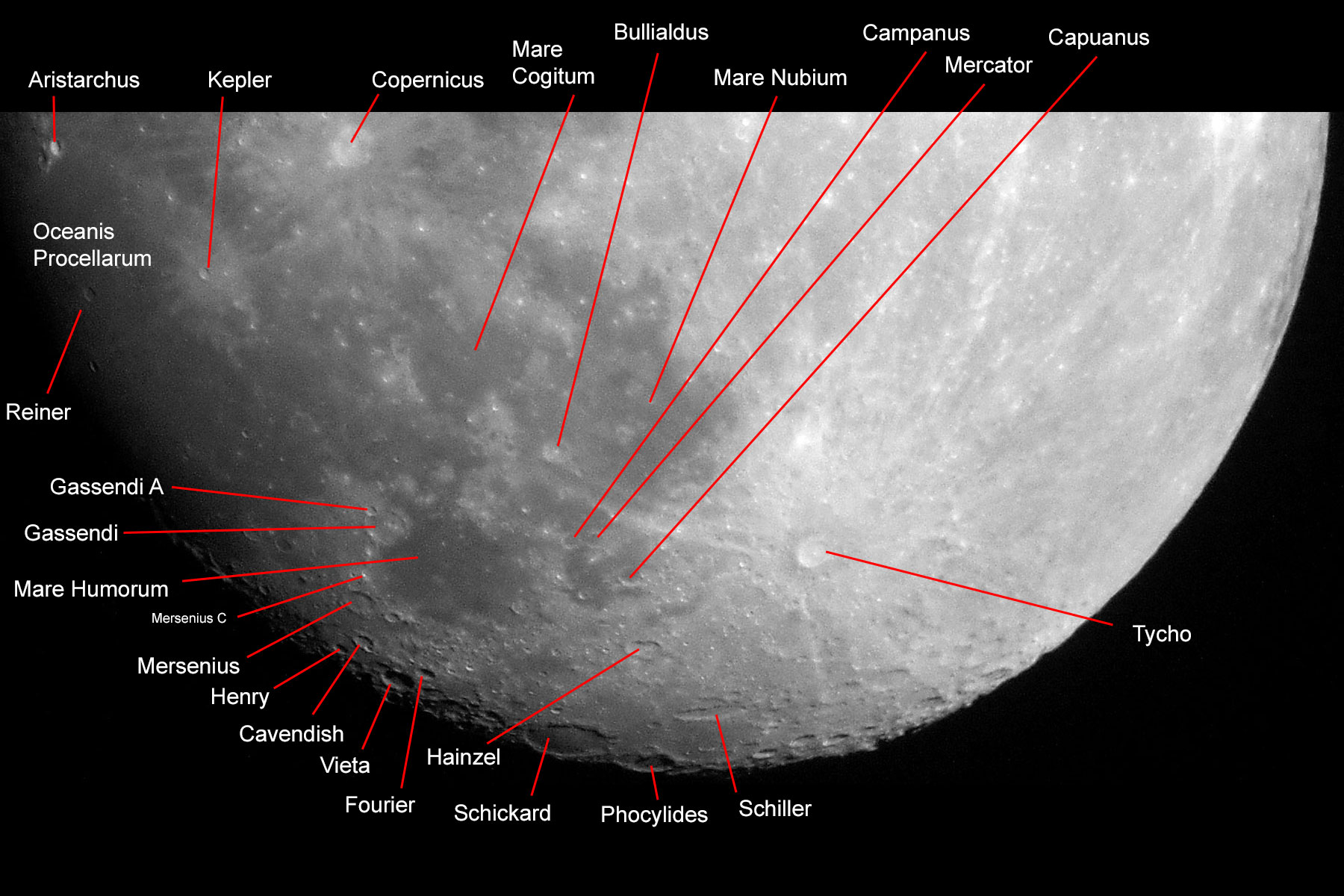Walking the Moon with my own Photos - Sections of Moon Photos Part 2
On these pages I do "moon walks" on the basis of my own photos. In other words, I try to name the objects on my lunar photos to get to know the moon better. Maybe these pages will help others to get to know the moon better as well...
On this page and on a second one, I present enlarged sections of certain regions on the moon so that the objects are easier to recognize.
See also Sections of Moon Photos - Part 1 - Back to the overview of my "moon walks".
Introduction
On this page and on a second one, I present enlarged sections taken from other photos in order to highlight certain details. The photos are rotated by 180 degrees or mirrored so that they correspond to the normal visual impression, but they are often somewhat skewed.
See also Sections of Moon Photos - Part 1.
I determined smaller craters using the Virtual Moon Atlas, which I use in the Windows version, because I cannot convince the Macintosh version to run correctly on my computer. Definitely, one or the other crater still has the wrong label...
Photos
Southern Hemisphere
The following section originates from a moon photo that was taken with the Sky-Watcher Skymax-102 OTA and the camera held to the eyepiece (April 2, 2017; Half Moon was on April 3, 2017).
Rosse (12 km diameter) serves as an example of small craters that can be recognized. The photo is, however, not very sharp...
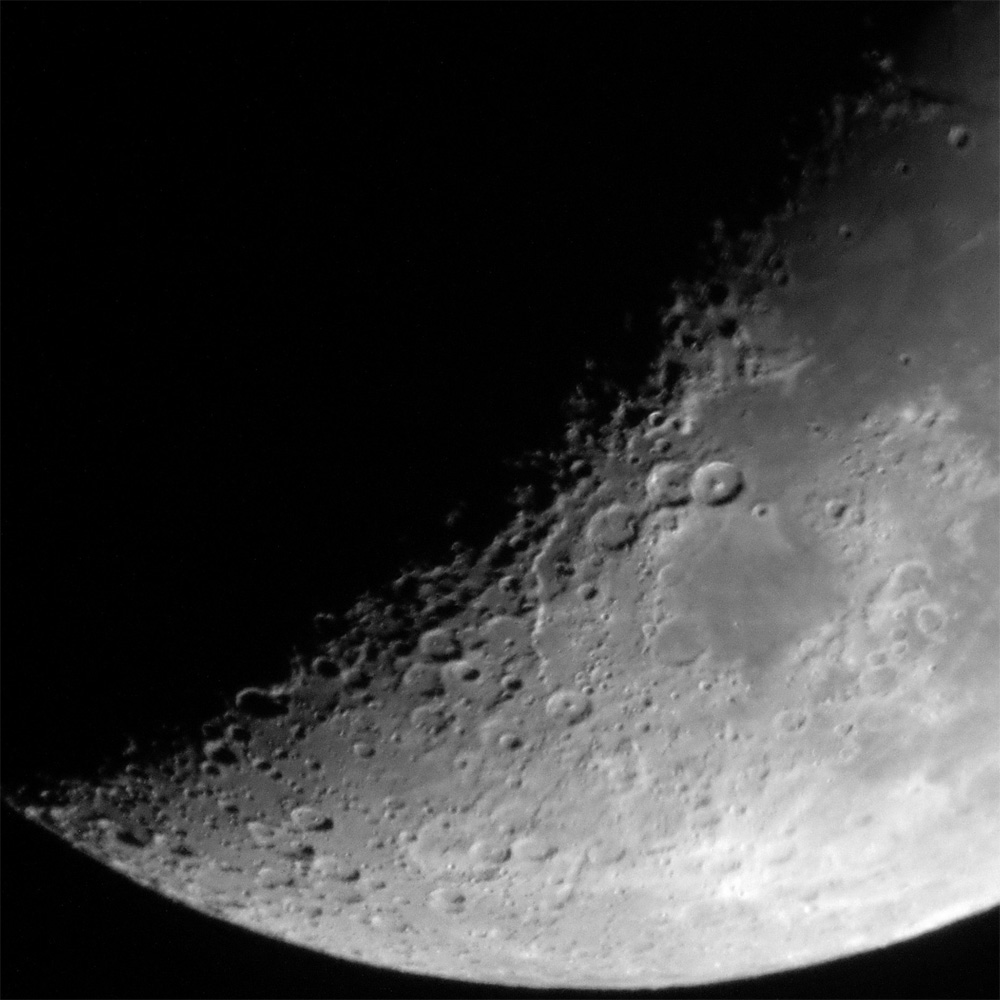 |
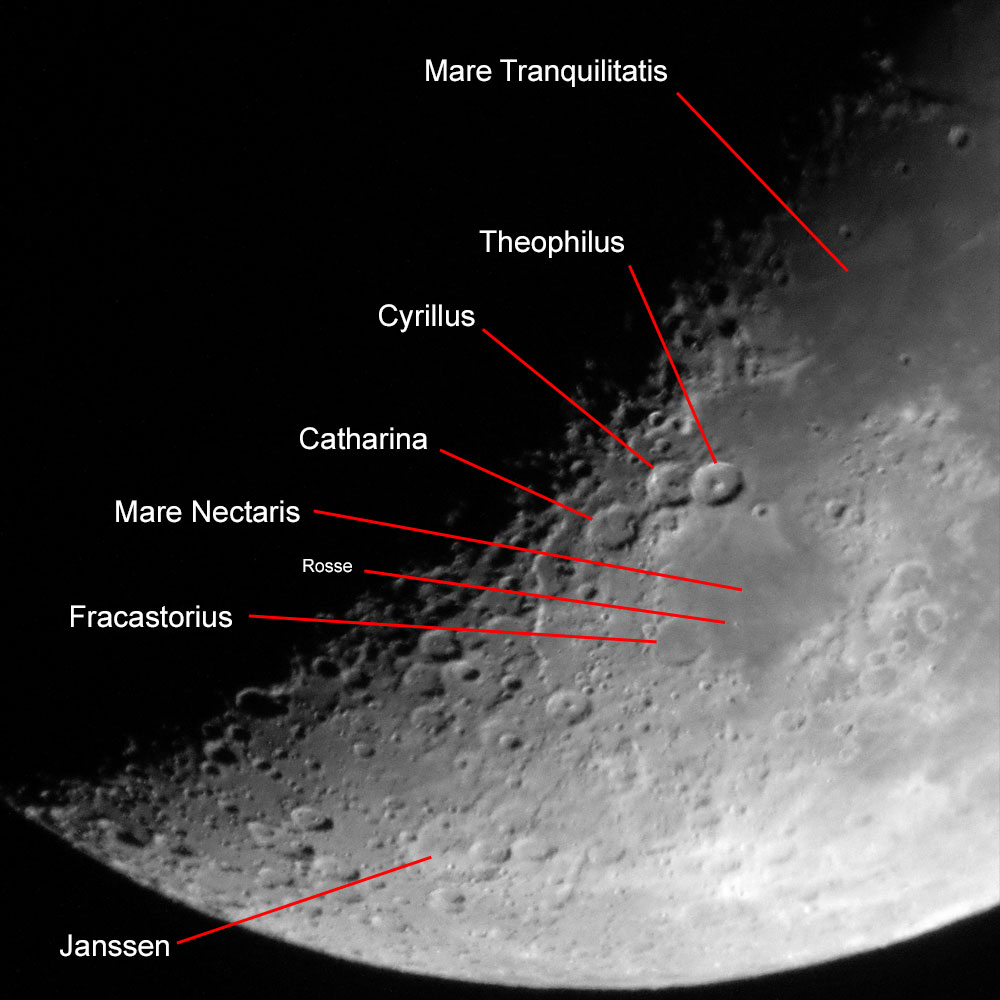 |
Photo data: April 2, 2017, Sky-Watcher Skymax-102 telescope, Ricoh GR held to the 16 mm UWA eyepiece
The next section originates from a moon photo that was taken with the Sky-Watcher Explorer 150PDS and the camera held to the eyepiece (March 24, 2018; Half Moon was on March 25, 2018). This photo is much more detailed as the one before, and you can even see craters that are below 10 km in diameter.
Hipparchus N (6 km diameter) serves as an example of small craters that can be recognized.
 |
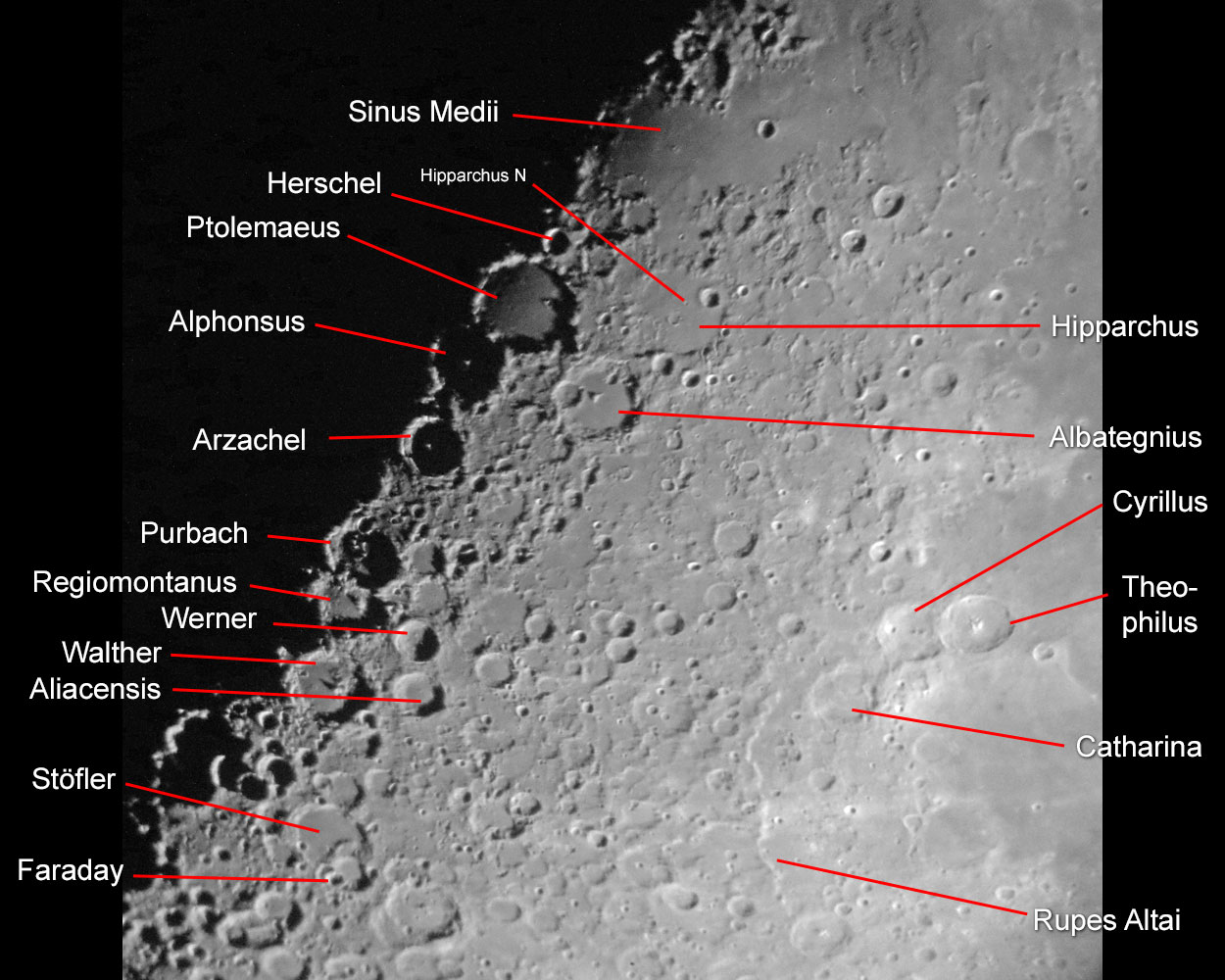 |
Photo data: March 24, 2018, Sky-Watcher Explorer 150PDS telescope, Ricoh GR held to the eyepiece
This section from a photo of the moon that was taken with the Sky-Watcher Explorer 150PDS telescope and the camera held to the eyepiece (March 24, 2018, one day before Half Moon, which took place on March 25, 2018). This photo is also very detailed, and you can even see craters that are below 10 km in diameter.
Hipparchus N (6 km diameter) serves as an example of small craters that can be recognized.
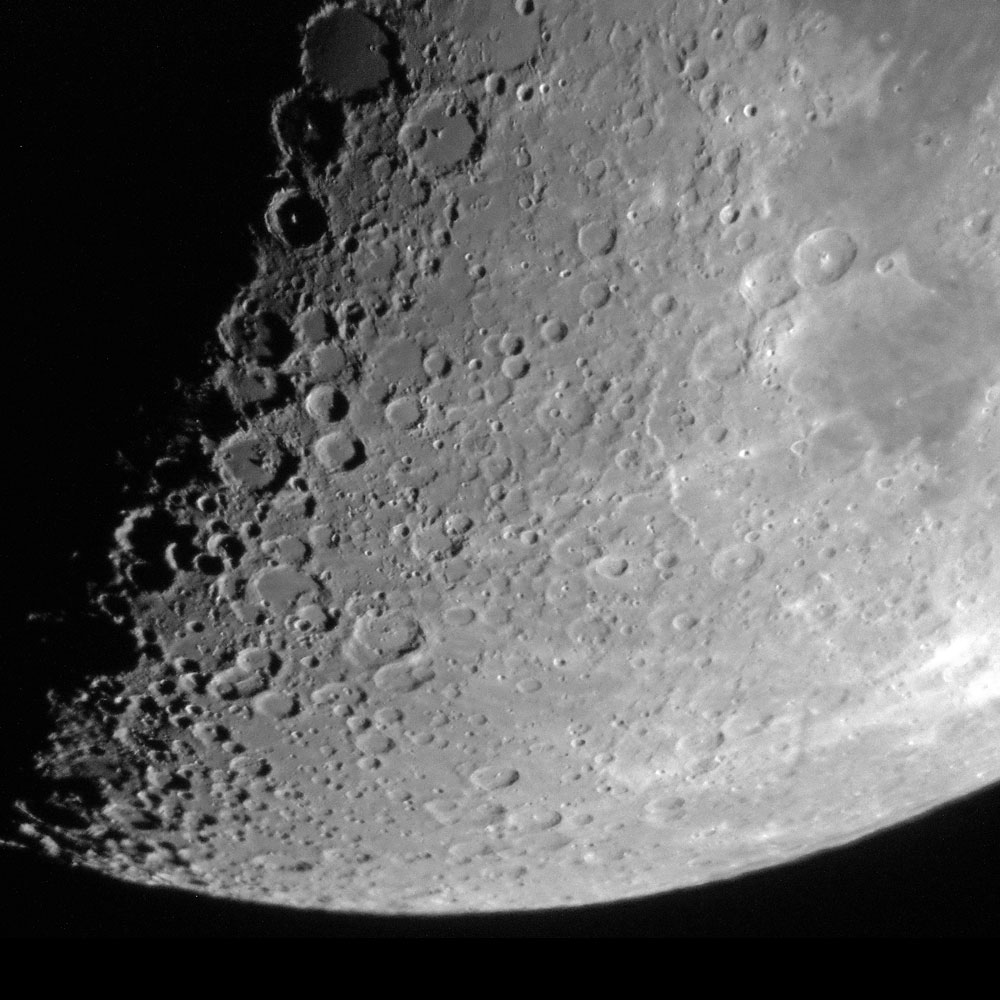 |
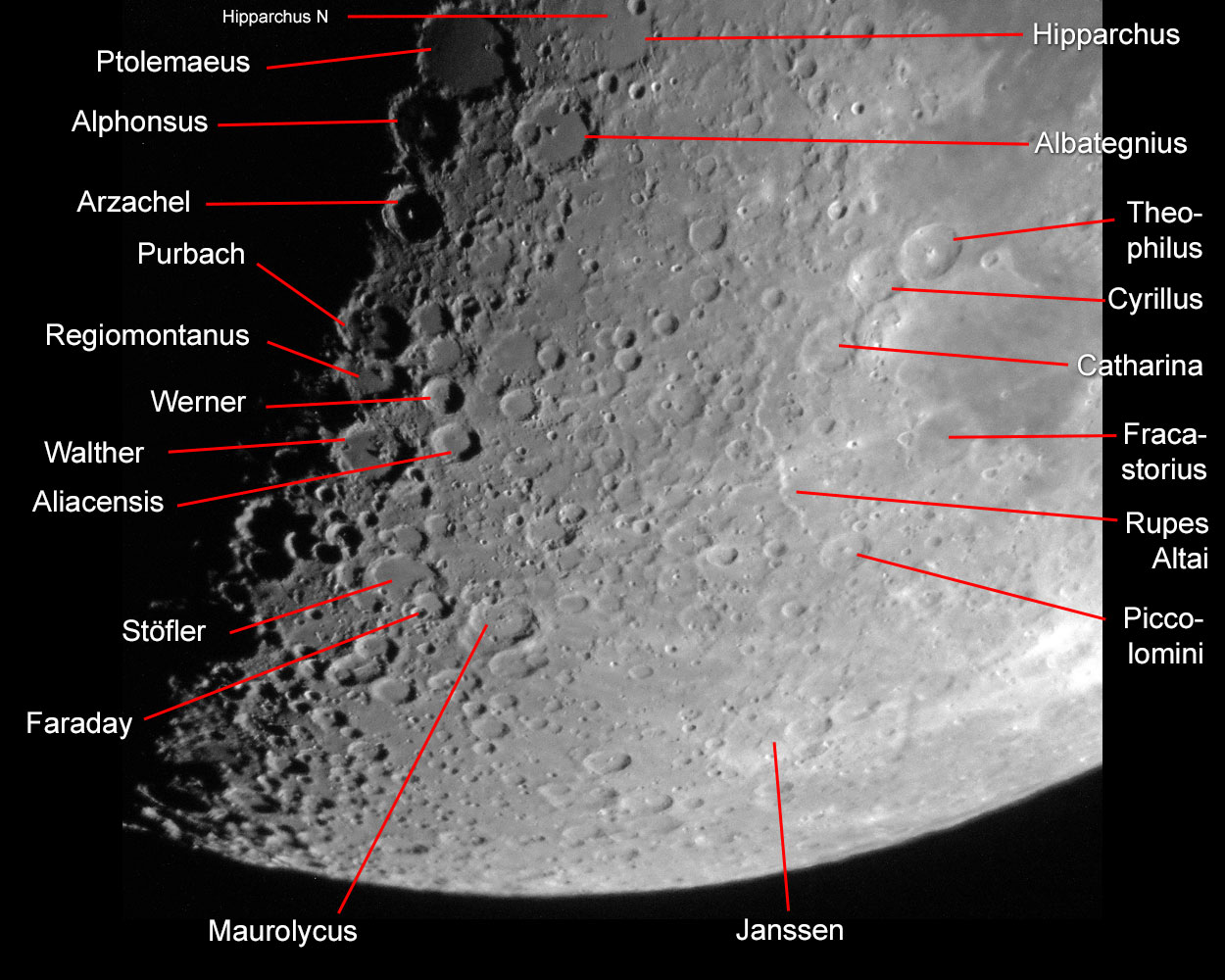 |
Photo data: March 24, 2018, Sky-Watcher Explorer 150PDS telescope, Ricoh GR held to the eyepiece
The next section from a photo of the moon that was taken with the Sky-Watcher Explorer 150PDS telescope and the camera held to the eyepiece (May 5, 2017, two days after Half Moon, which took place on May 3, 2017).
Hipparchus L (13 km diameter) serves as an example of small craters that can be recognized.
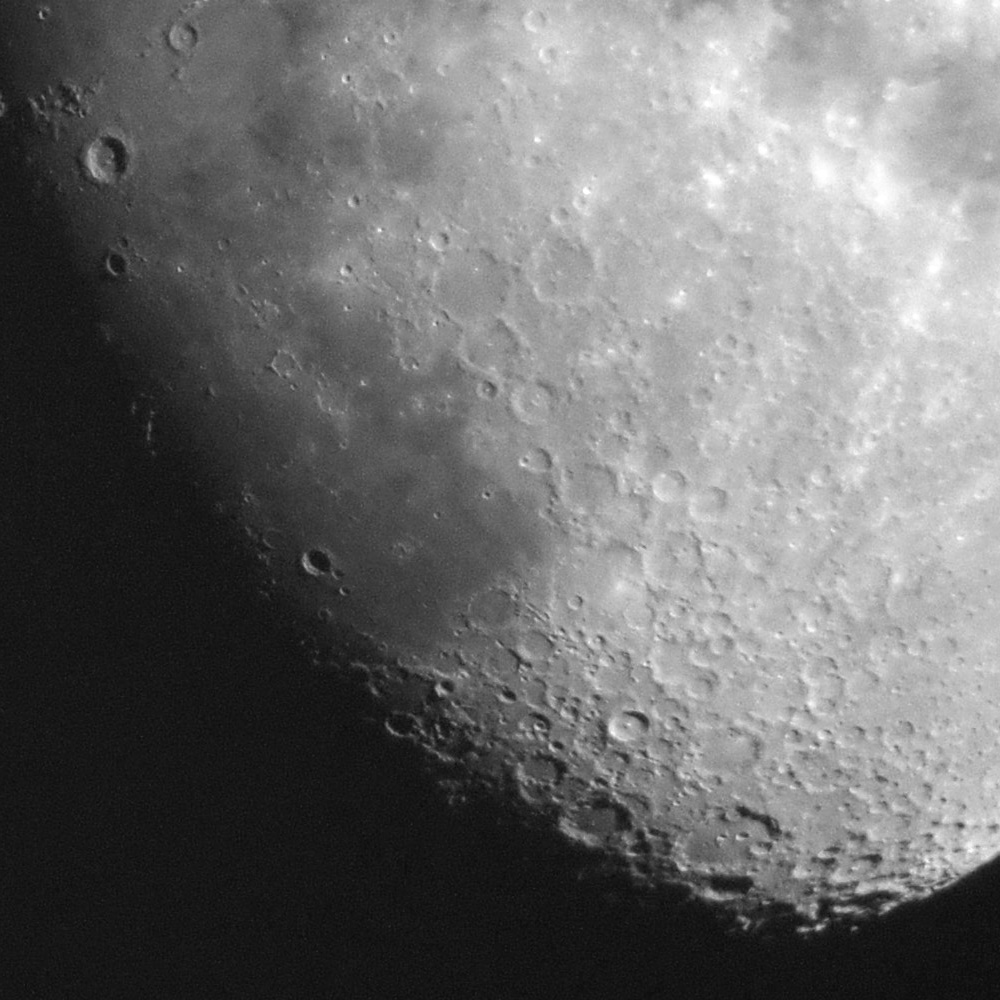 |
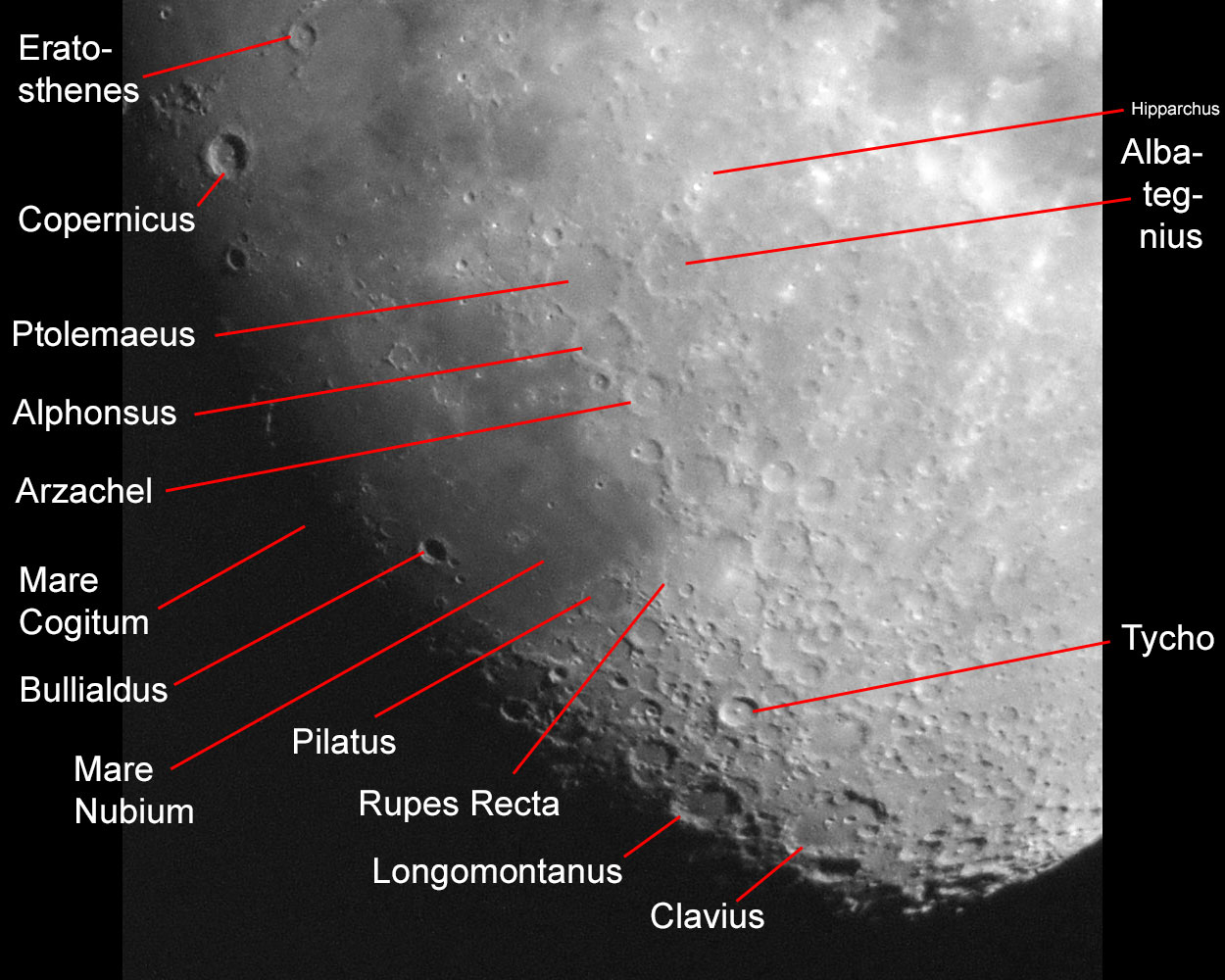 |
Photo data: May 5, 2017, Sky-Watcher Sky-Watcher Explorer 150PDS telescope, Ricoh GR held to the 16 mm UWA eyepiece
A section from a photo of the moon that was taken with the Sky-Watcher Heritage 100P and the camera held to the eyepiece (July 2015).
Hipparchus L (13 km diameter) serves as an example of small craters that can be recognized.
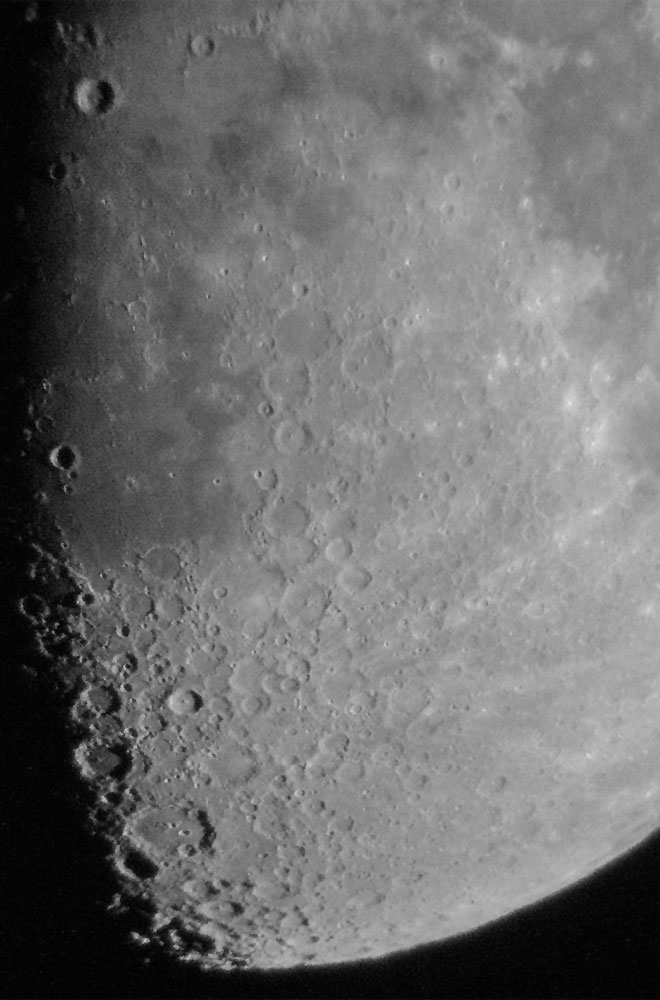 |
 |
Photo data: July 2015, Sky-Watcher Heritage 100P telescope, Leica X Vario held to the 32 mm Digiscope eyepiece
Around the South Pole...
A section from February 26, 2018 (three days after Half Moon) shows Mare Humorum and the Krater Gassendi at the bottom left; to the right, you can see the crater Tycho with rays emanating from it.
Darney C (13.3 km diameter) and Darney (15 km diameter) serves as examples of small craters that can be recognized on the photo.
 |
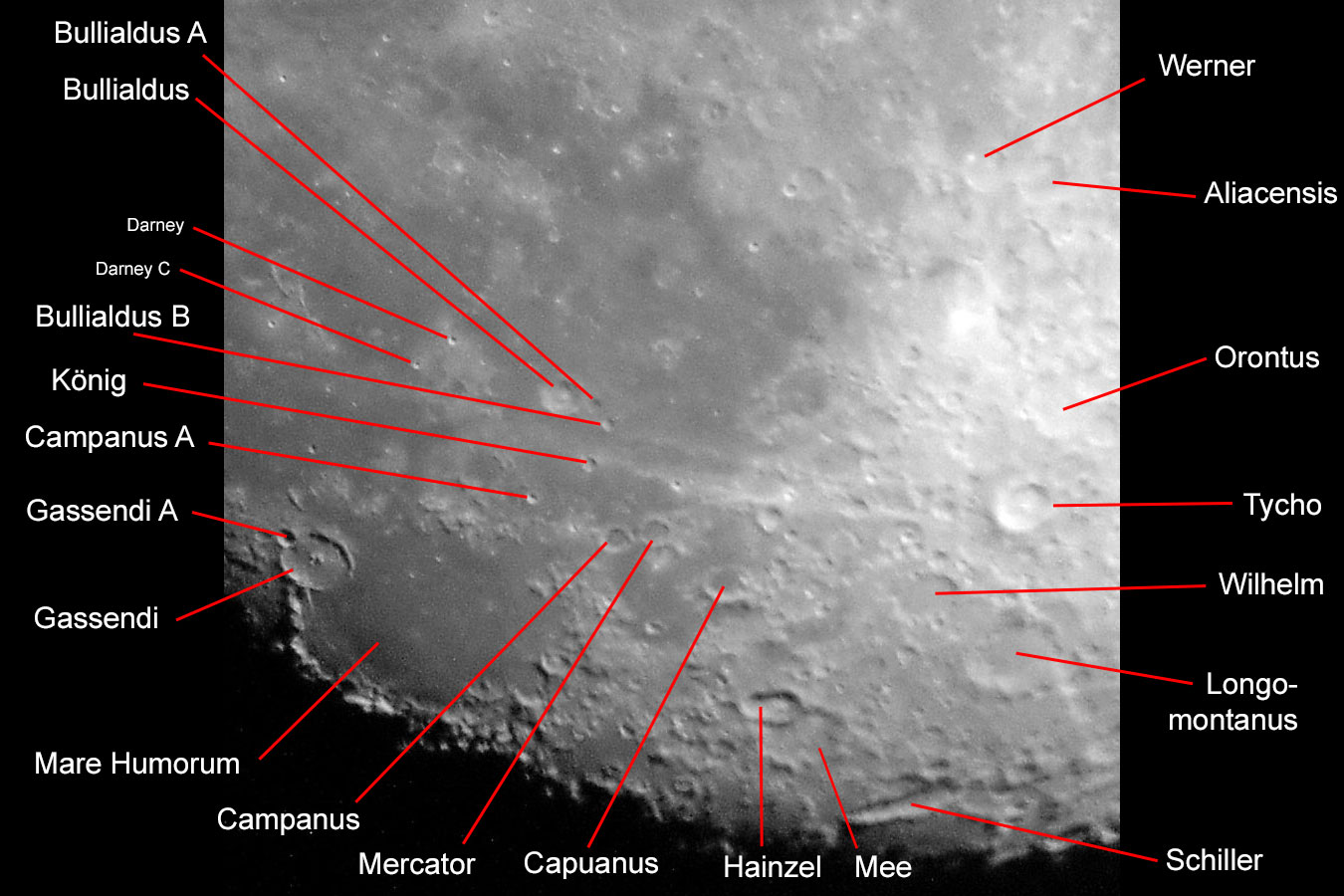 |
Photo data: February 26, 2018, Sky-Watcher Skymax-102-Teleskop, Ricoh GR held to the eyepiece
February 27, 2018: Southern part of the moon. Most prominent is the crater Tycho with rays emanating from it.
Mersenius C (14 km diameter) serves as an example of a small crater that can be recognized on the photo.
Photo data: February 27, 2018, Sky-Watcher Skymax-102 telescope, Ricoh GR held to the eyepiece
February 28, 2018: Southern part of the moon; most prominent is the crater Tycho with rays emanating from it.
Gassendi A (33 km diameter) serves as an example of small craters that can be recognized.
Photo data: February 28, 2018, Sky-Watcher Skymax-102 telescope, Leica X Vario attached to the 32 mm eyepiece
References
- Mond (Wikipedia): de.wikipedia.org/wiki/Mond
- Moon (Wikipedia): en.wikipedia.org/wiki/Moon
- Lambert Spix (2013, 3. Auflage). moonscout - Mondmeere, Krater und Gebirge einfach finden und beobachten. Oculum-Verlag. ISBN 978-3-938469-58-3
- Lambert Spix & Frank Gasparini (2011, 1. Auflage). Der Moonhopper. Oculum-Verlag. ISBN 978-3-938469-54-5
- Ronald Stoyan, Hans-Georg Purucker (2013, 1. Auflage). Reiseatlas Mond. Oculum-Verlag. ISBN 978-3-938469-64-4
- Virtual Moon Atlas: ap-i.net/avl/en/start
| 09.05.2023 |
